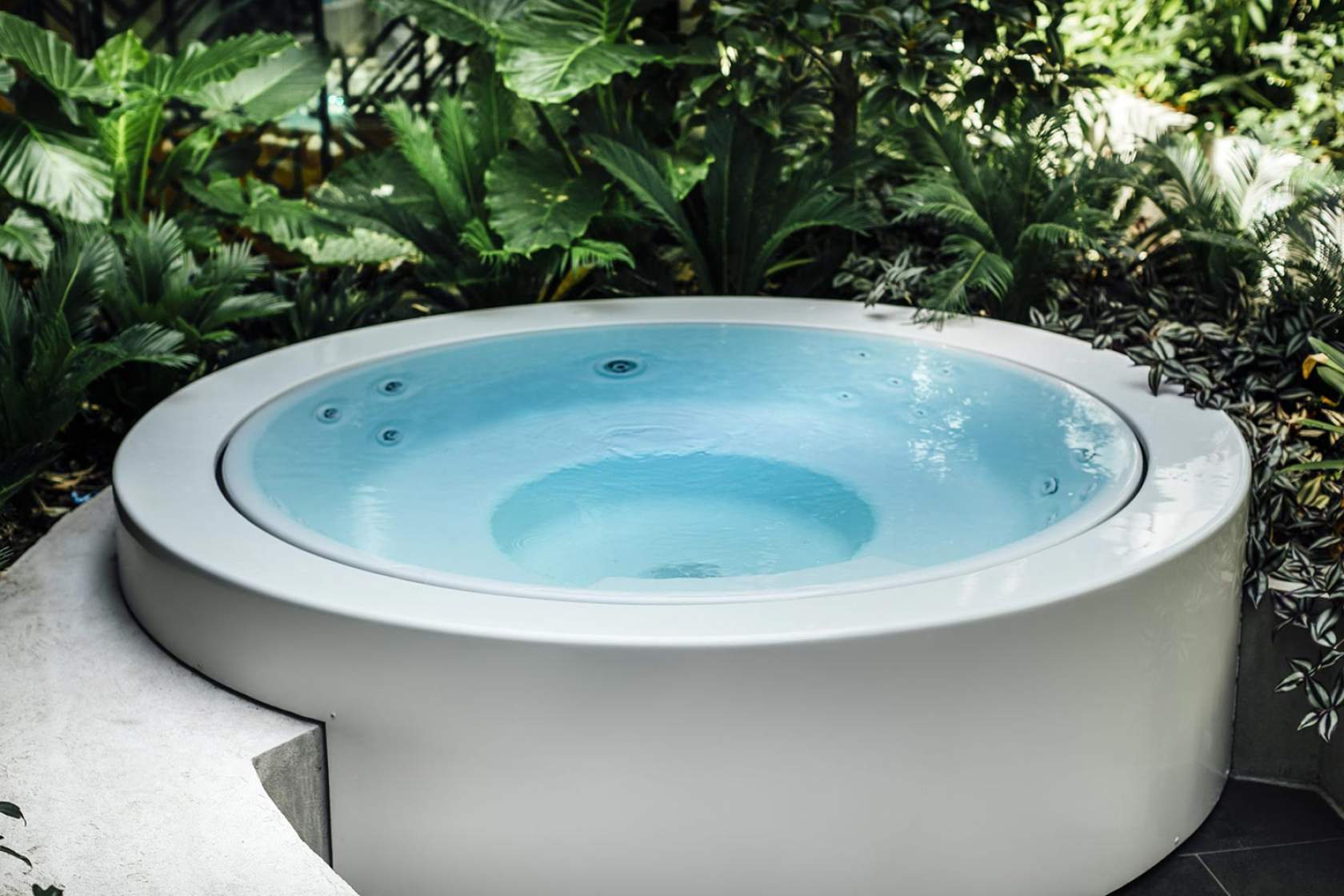

- Home >
- Caring for your Pool & Spa >
- Maintenance Schedules > Spa Maintenance
Spa pool maintenance
A great option for small spaces, spa pools offer a little bit of affordable luxury. Regular maintenance keeps water sparkling clean and ensures smooth operation.
There are chemicals involved, but you don’t need a white coat and test tubes. Follow these basic steps and consult a professional if you are unsure.
Water treatment
The water treatment requirements for a spa pool differ from those for a swimming pool, because you are dealing with hot water. Hot water requires different treatment to prevent the growth of viruses, bacteria and algae.
Grab a test kit from your local SPASA spa retailer or pool shop and get advice on correct use. Testing frequency depends on spa usage, but it doesn’t hurt to test daily. Total alkalinity and sanitiser are measured in parts per million (ppm) and pH on a scale from 0 to 14 (seven is neutral, below is acid and above is alkaline). The correct use of chemicals will maintain the water in a clean and healthy condition. Recommended levels are:
Total alkalinity: 90 - 110ppm
pH: 7.4 - 7.6
Chlorine: 2 - 3ppm
Bromine: 3 - 4ppm
The spa water should be changed every three to four months, or remove and replace approx. 30% or 1/3 of the volume of water every three to four weeks.
Total alkalinity
Total alkalinity impacts pH fluctuation, so keep it in the desired range. To raise total alkalinity add small quantities of sodium bicarbonate. To lower total alkalinity, add small quantities of hydrochloric acid. Re-test in one hour and make further adjustments as necessary.
The pH level
pH is the measure of the acid/alkaline level of the water. It is important to maintain the correct pH level as it effects the action of other chemicals.
The pH is measured on a scale of O to 14. Seven is neutral, below seven is acidic, and above seven is alkaline.
Incorrect pH levels can cause poor chlorine or bromine efficiency, eye and skin irritations, corrosion of metal fittings, cloudy water and formation of scale on the pool walls and fitting. The pH should always be above 7.0 (measured at room temperature, not hot) to avoid possible corrosion of equipment. However, it should not be higher than 7.8, as this would reduce the efficiency of the sanitiser.
If the pH needs to be increased, add soda ash. To reduce the pH, add acid. Wait for one hour and test again.
Sanitising the spa
Sanitising your spa is essential for safe, healthy water, free of harmful micro organisms. The most common forms of sanitiser are chlorine and bromine. Ozone may also be used in conjunction with it. Saltwater chlorinators must be of sufficient capacity to maintain the recommended chlorine residual.
The amount of disinfectant required depends on a number of factors, including water temperature, the frequency of use and the number of people using the spa. It is most important to always keep the sanitiser level at 2 to 3ppm. In very hot water the sanitiser can be used up very quickly and should be checked regularly. After heavy use of the spa or on a weekly basis, the water should be shock dosed with chlorine or bromine. Be sure to check the level again before use.
If the spa or hot tub is not being used, add sanitiser every day to prevent contamination.
Cleaning
Clean the filter every four to eight weeks and replace it every year or so, depending on usage (around 10–15 cleaning cycles).
You’ll need to drain and change the water every three or four months. Clean the spa interior at the same time, using specialist spa cleaning products. For more regular water maintenance, replace around one third of the water volume every three to four weeks.
Remember to consult a professional if you are unsure about how to maintain water balance. Follow these simple steps and you’re sure to enjoy your spa or hot tub for many years to come.
For safe and enjoyable use
Children should be supervised at all times when either in or near the spa or hot tub. Alcohol should not be drunk while using the spa.
